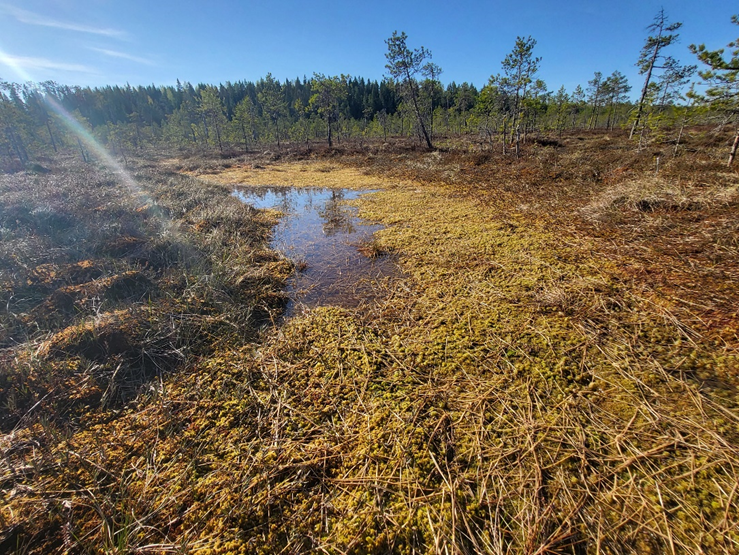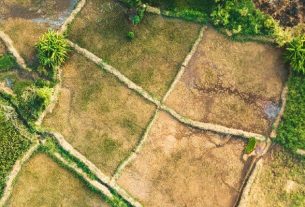Nicola Kokkonen, Anna Laine-Petäjäkangas, and Eeva-Stiina Tuittila discuss their article: ‘A deepened water table increases the vulnerability of peat mosses to periodic drought.’
Background

Around the world, we are witnessing warmer temperatures and extreme weather caused by climate change. However, these changes are not affecting all regions equally; northern regions are being hit hardest. While peatlands cover only a small fraction of land globally, most peatlands are located in these rapidly changing northern regions. Over the past 11,000 years or so, peatlands have slowly accumulated massive stores of carbon, particularly in cool and humid regions. Peatlands are sensitive ecosystems, sustained by high water tables that promote the accumulation of carbon-rich peat formed by plants adapted to these waterlogged conditions. Peat mosses (Sphagnum spp.), the stars of peatlands, are particularly well-adapted to grow in these wet conditions. These mosses are keystone species; they are primarily responsible for the exceptional carbon accumulation in peatlands and contain perhaps more carbon than any other genus of plants globally. However, anticipated drying due to climate change will undoubtedly impact these incredible specialist plants, and potentially release additional carbon back to the atmosphere.

Our study
But how do peat mosses cope with the drying? Gradual drying has led to the loss of specialist species from the wettest areas, however, the combined impact of long-term gradual drying and periodic drought on sensitive peat mosses has not previously been studied. In this study, we investigated how long-term drying of peatlands impacts the photosynthesis and drought vulnerability of peat mosses.
“What does not kill you makes you stronger” was not the case but rather “What does not kill you makes you less prepared and more vulnerable to take the next hit”.

How did we come to this conclusion? We brought 96 surface cores (“mesocosms,” approximately 15 cm diameter and 10 cm depth) to a greenhouse and exposed them to an experimental drought for 43 days. Each mesocosm contained a single peat moss species that was collected from a large peatland in Southern Finland where naturally wet and dry areas exist adjacent to a long-term experimental drainage that was established 17 years before this experiment. This allowed us to measure if drought has a different impact on mosses accustomed to dry versus wet conditions. The field sites where mosses were collected also included nutrient-rich fen and nutrient-poor bog areas, so we were able to study a variety of mosses adapted to different growing conditions.
To determine the impact of drying on peat mosses, we measured the rate of photosynthesis before the drought, at the end of the drought, and for three weeks after rewetting. The rate of photosynthesis can tell us about how well the mosses are doing physiologically. Stressed or damaged plants have lower photosynthesis rates and a poor ability to fix carbon, while flourishing plants have higher photosynthesis rates.
Our findings

We found that peat mosses from drier peatland areas did not have improved drought tolerance. In fact, mosses from dry environments were more vulnerable to periodic drought than those from wet environments. The most vulnerable mosses in our experiment were from naturally dry peatland areas, those from a 17-year experimental drainage were intermediate, and those from naturally wet areas were resistant to drought. Overall, peat mosses from the fen tended to fare better than those from the bog as they were larger, allowing them to hold greater volumes of water in their structure – even during a drought. The small peat mosses from the experimentally drained bog had the lowest photosynthesis rates, suggesting they were already stressed by water level drawdown prior to periodic drought. In this case, size really did matter!
Our findings indicate that the combined impacts of gradual drying and periodic droughts will make peat mosses more vulnerable to climate change. Sensitive and important northern peatlands may undergo change faster than anticipated. The stresses caused by drying seem to be additive for the mosses meaning that drought is more damaging for species already existing on the edge of their ecological envelope.
